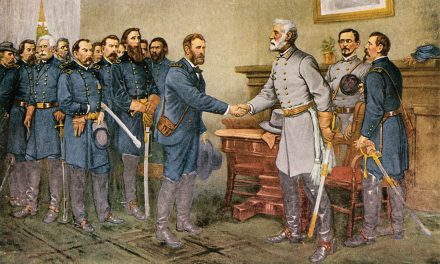After my post yesterday (and the comments it generated) asking Clinton supporters to make their case for her nomination, I decided to peruse the internet to see what other arguments there might be for nominating her, or not, as the Democratic candidate this Fall. That is, other than those made by her supporters in that thread, and other than those that point to flaws, ambiguities, concerns, etc. regarding Obama. And I managed to find something that was new to me, which I thought I’d pass along for your consideration this morning.
What I came across appeared in the New York Times as an op-ed piece yesterday by Nicholas Kristof, who makes the case that historically, women rulers have done, on average, a better job than their male counterparts. Nonetheless, he finds women who have held the highest elective offices in democracies to have been mediocre leaders for the most part. Surprising? Confusing? Sexist? Well, let’s examine the basis for his claims:
While no woman has been president of the United States — yet — the world does have several thousand years’ worth of experience with female leaders. And I have to acknowledge it: Their historical record puts men’s to shame. […]
Research by political psychologists points to possible explanations. Scholars find that women, compared with men, tend to excel in consensus-building and certain other skills useful in leadership. If so, why have female political leaders been so much less impressive in the democratic era? Margaret Thatcher was a transformative figure, but women have been mediocre prime ministers or presidents in countries like Sri Lanka, India, Bangladesh, Pakistan, the Philippines and Indonesia. Often, they haven’t even addressed the urgent needs of women in those countries.
I have a pet theory about what’s going on. […]
In one common experiment, the “Goldberg paradigm,” people are asked to evaluate a particular article or speech, supposedly by a man. Others are asked to evaluate the identical presentation, but from a woman. Typically, in countries all over the world, the very same words are rated higher coming from a man.
In particular, one lesson from this research is that promoting their own successes is a helpful strategy for ambitious men. But experiments have demonstrated that when women highlight their accomplishments, that’s a turn-off. And women seem even more offended by self-promoting females than men are.
So what is this “Goldberg paradigm” to which Kristoff refers, and how valid is it? Are ambitious women at an inherent disadvantage because of subtle prejudices against female self promotion which manifest across both male and female populations? And what does that suggest regarding the effectiveness of women leaders? Bear with me a little as I explore the world of social interaction and gender bias research:
(cont.)
How Are Men and Women in Leadership Positions Judged Differently?
Women and men are not perceived and treated as equal in leadership roles. Rather there is consistent evidence for an evaluative bias that relates high competence to low likeability in women but not in men (Carli & Eagly, 1999; Deaux, 1998; Heilman, 2001; Ridgeway, 1997, 2001). The fact that this does not happen to men in the same situation provides clear evidence for gender-based double standards in the working world. […]
. . . The results of the most recent meta-analysis on Goldberg-paradigm studies (based on information from 49 studies) showed that men were preferred for jobs rated as masculine gender-typed with d = .34, and women were preferred for jobs rated as feminine gender-typed with d = -.26 (Davison & Burke, 2000). Given that leadership roles are usually masculine gender-typed, results of this research suggest a bias against female candidates for such positions (Eagly & Karau, 2002).
However, Goldberg-paradigm studies so far have only been conducted with written material, not with dynamic visual material, which, when included, comes much closer to the reality of hiring or promotion situations. […]
. . . In this study, gender construction was assessed with material of high social relevance, that is, text extracts adapted from real workplace situations and videoclips with dynamic motion information. Such dynamic material had not yet been used within the Goldberg-paradigm. Moreover, natural language material was interpreted by participants, and then analyzed . . . Gender served as one of a number of proximal cues to infer competence, support, dominance, and emotionality. The main research question was which constructive inferences participants would make based on the manipulation of gender-assumption only. . . . The following research question and hypotheses were tested:
(1) There will be systematic differences in the evaluation of leaders in the “stereotypic directions,” with “men” being judged higher on competence and agentic traits and “women” judged higher on emotionality and communal traits (Bakan, 1996; Eagly & Karau, 2002). […]
4) There will be differential utilization of verbal and nonverbal cues by participants related to the gender-assumptions they hold about the target (Koch et al., 2004). […]
RESULTS
. . . Based on the woman gender-assumption (Mrs. K), the stimulus person was perceived as more dominant, . . . and less warm . . . than the identical person on the basis of the man gender-assumption. Thus, the target person as a woman team leader was perceived as more agentic and less communal than the person as a man team leader. Overall . . . the effect size estimates point to relatively small effects.
Furthermore, I found a main effect for sex of participant on the following items: women on average rated stimulus persons higher on dominance …, assertiveness, … influence, … energy, … security, and professionalism, … and lower on talkativeness […]
. . . Gender differences in ratings showed that men focused mostly on dominance ratings . . . thereafter on competence ratings . . . , on support . . . , and finally on emotionality . . . Women, too, focused mostly on dominance . . . , then on support . . . , on competence . . . , and finally on emotionality […]
Women were rated higher on agentic traits than were men (e.g., dominance, assertiveness), and men were rated higher on communal traits than were women (especially warmth). In the cue analysis I was then able to specify which cues participants had used to form their opinions about dominance, support, competence, and emotionality of targets. Two significant gender effects emerged: with woman gender-assumption, participants used more pragmatic cues to infer dominance and with man gender-assumption, participants used more pragmatic cues to infer emotionality. […]
. . . Because dominance and assertiveness as nonverbal status behaviors are mostly communicated nonverbally and gender functions as a diffuse status cue, we can assume that the nonverbal experimental condition has its implications in the status domain. According to expectation states theory and role congruity theory, women should be judged lower on likeability when they use a higher visual dominance ratio, as they violate gender expectations. Women who use the nonverbal patterns of high status persons will thus be judged more negatively, unless they bring a certain amount of communal behaviors into agentic leadership. […]
Results can be related back to a main finding of stereotype research: the paradox of being judged less likeable when acting in agentic ways as a woman. […]
In sum, the results of the present research suggest that the mere influence of different gender-assumptions has expectational (adaptation of standards due to gender-assumption; expectancy-based contrast and double-standards effect), and perceptional implications (differential ratings, e.g., for dominance and warmth and differential use of cues, e.g. for support).
What does this boil down to? That women are perceived differently when they are considered for leadership roles, at least among the college age populations that make up the majority of these studies. Furthermore, when both verbal and nonverbal cues are considered, women leaders are more likely to be seen as dominant by either sex (though for different reasons) and men as more “warm” and fuzzy” feeling, which may explain the eponymous “who would you rather have a beer with?” non sequitur which has lately been considered of such import by our pundit class.
More importantly, I think it also helps explain many of the negative reactions to Hillary Clinton, even among Democrats. She is judged more harshly on the “dominance” scale (thus the question to McCain from a supporter last month “How do we beat the bitch”) than male candidates are. I also think it helps explain the Obama tsunami, since his natural charm is enhanced because people are more likely to judge male leaders (even George “I’m a compassionate conservative, heh, heh” Bush) as “nice guys” than they are female leaders. The inherent bias seems to be that women are supposed to be more caring, so if they show too much competence, or dominance, traits which we expect from men but not women, they will be viewed as less caring. At the same time, male leaders can play the “alpha male” card without it necessarily affecting how people of both sexes perceive them regarding character traits such as compassion, congeniality, etc.
Case in point, Mike Huckabee and John McCain, both of whom have been reported to be prone to angry displays, vindictiveness, and all the classic signs of the bully you really, really hated in elementary school, yet they continue to receive favorable ratings from the press covering their campaigns, and much of the public, about how “warm” and “sincere” they are. Bill Clinton, himself, was rumored to fly off the handle quite easily (and we’ve seen some of that in his campaigning this year) and yet he is still beloved by many Democratic voters and other Americans as the President who was most empathic, who could best “could feel their pain.”
Thus, Hillary’s claim to competence, and the aura of inevitability she has tried to foster, may actually be hurting her campaign, because it causes people to see her as “cold hearted” and less concerned about their problems. It also may explain why the now famous “tearing up” incident in New Hampshire benefited her so much in the run up to that primary, because it contradicted the “cold, mean spirited, heartless” meme that had attached itself to her. Indeed, if I was advising her campaign, I’d have her drop all references to her resume in her own speeches (that’s something that her surrogates can focus upon).
Instead, I would have her focus on her vision for America, her hopes and dreams, and especially on her deep concern and desire for helping others. In a strange, counterintuitive manner, the more she personally asserts her competence, her toughness and labels herself as the candidate who can hit the ground running from day one, the more she may be turning off potential voters. A strategy that would work perfectly well for a man, may be the worst possible campaign strategy for her right now.
These prejudices are real, and I am beginning to be convinced that they have had a lot to do with her recent losing streak to Obama, above and beyond all the excitement his campaign has generated. What worked for Bill Clinton in 1992 and 1996, the rapid response teams, the frequent counterattacks, etc., may not be the stratagem that works best for Hillary. Indeed, she may need to wean herself from those advisers who continue to push this approach, and even distance herself from her husband, in order to begin winning back the hearts and minds of Democratic voters in the upcoming primaries and caucuses. In short, she needs to redefine herself, and fast, in my opinion, as the “compassionate candidate” not just as the most competent one.
Let me give Mr. Kristof the final word here:
Female leaders face these impossible judgments all over the world. An M.I.T. economist, Esther Duflo, looked at India, which has required female leaders in one-third of village councils since the mid-1990s. Professor Duflo and her colleagues found that by objective standards, the women ran the villages better than men. For example, women constructed and maintained wells better, and took fewer bribes.
Yet ordinary villagers themselves judged the women as having done a worse job, and so most women were not re-elected. That seemed to result from simple prejudice. […]
Such prejudices can be overridden after voters actually see female leaders in action. While the first ones received dismal evaluations, the second round of female leaders in the villages were rated the same as men. “Exposure reduces prejudice,” Professor Duflo suggested.
Women have often quipped that they have to be twice as good as men to get anywhere — but that, fortunately, is not difficult. In fact, it appears that it may be difficult after all.







